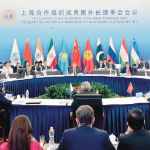Tehri, also known as Tehar in the local language, holds a significant place among Kashmiri cuisine as a traditional and widely enjoyed cuisine. In the past, making tehri was a frequent practice in every Kashmiri household whether urban or rural societies.
It won’t be wrong to say that in olden times people across Kashmir would make Tehri twice a week, and some would make sure that it is specifically cooked on Fridays. It was a cherished part of their culinary traditions and culture .
In villages, a heartwarming tradition would take place where elderly women would gather and distribute Tehri among neighbors, particularly the children. This act of sharing and communal bonding was not limited to villages alone but also observed in localities and shrines across Srinagar city.
However, in recent times, the practice of making tehri has been on the decline. Fewer people in Kashmir valley are continuing the tradition, while making and distributing Tehri among children is gradually disappearing from the valley.
This shift has left many with a sense of nostalgia and longing for the trend that once defined their lives.
Tehri held deep emotional significance for those who prepared and consumed it.
The people in the valley believed that Tehri provided protection against evil and brought blessings to their families. Jana Begum, a 70-year-old resident of Magermal Bagh, Srinagar, says, “My grandparents would faithfully make Tehri every Friday, simply because they believed that their devotion and simplicity would shield them from harm.”
“However, with the changing times, people have embraced different lifestyles and preferences. The younger generation, in particular, is opting for modern food choices, leading to a decline in the tradition of making tehri”, she added.
The loss of this cultural practice is felt by those who held a deep emotional connection to Tehri.
Nevertheless, there are still some people in Srinagar who continue to make Tehri, distributing it among people on Fridays. They firmly believe that this act will invoke divine protection for their families and loved ones. Their dedication to upholding the cultural significance of Tehri serves as a reminder of the rich heritage that resides within the Kashmir Valley.
Taja Begum, a 65-year-old resident of Bandipora,told Rising Kashmir, “Whenever there was bad weather in the region, people in the villages would gather at local shrines and prepare tehri, a traditional rice cuisine. ” According to her, their collective belief and practice were believed to bring about pleasant weather.
Taja Begum’s faith in this practice remains strong, as she firmly believes that if this tradition is followed, it will undoubtedly yield positive results. The act of coming together at the local shrines during unfavorable weather conditions may not only be seen as a way to seek solace and unity but also as a means of invoking a sense of hope and invoking divine intervention to bring about a change in the weather.
The vanishing practice of making Tehri provides an opportunity to reflect on the evolving nature of traditions and the need for their preservation. While adapting to the changing world, it is vital to strike a balance between embracing modernity and honoring the customs that define a community’s identity.
Tehri’s appeal lies not only in its delicious blend of spices and ingredients but also in its ability to evoke nostalgia, foster a sense of community, and strengthen spiritual connections. As the Kashmir Valley navigates these changing times, it is hoped that Tehri’s significance will not be forgotten. Efforts should be made to revive and celebrate this traditional cuisine for future generations, ensuring that the cultural heritage of Tehri remains alive and cherished.
In many cultures and communities around the world, rituals and practices are deeply intertwined with people’s beliefs and faith. Such practices often serve as a way for individuals and communities to cope with challenging circumstances, find solace in their shared experiences, and foster a sense of connection to something greater than themselves.








